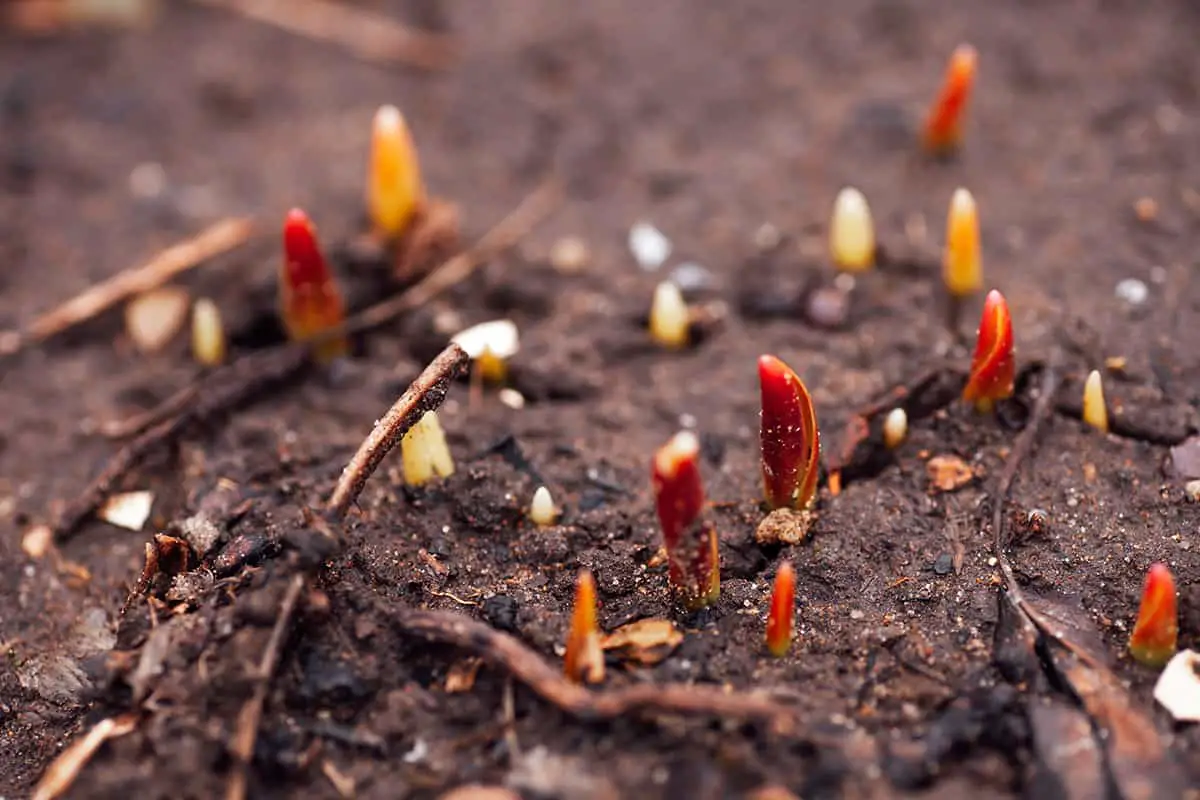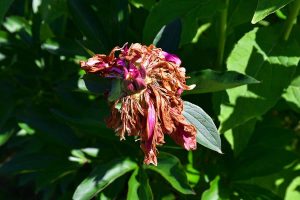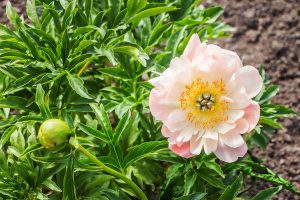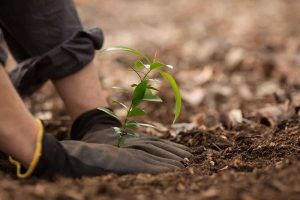If you have mature peonies growing in your garden, then they may be producing seeds that you can use to grow new peony plants. Growing peonies from seed can be a long process that requires patience, however, when you finally have a blooming peony plant that you nurtured from seed, it is incredibly rewarding.
Here we describe the step-by-step measures you can take to grow peonies from seed.
Table of Contents
How to Source Peony Seeds
The obvious way to source peony seeds is to simply buy some from your local nursery or an online retailer, however, if you can harvest your own peony seeds this will be much more satisfying.
Unfortunately, Itoh peonies do not produce viable seeds and are actually sterile, however, most herbaceous peonies and tree peonies will produce seeds that can give life to new plants. In order to prepare your peony plants for harvesting, you’ll need to allow flowers to remain on the plant long after they have faded. In short, do not deadhead your peonies after they have flowered.
How to Harvest Peony Seeds
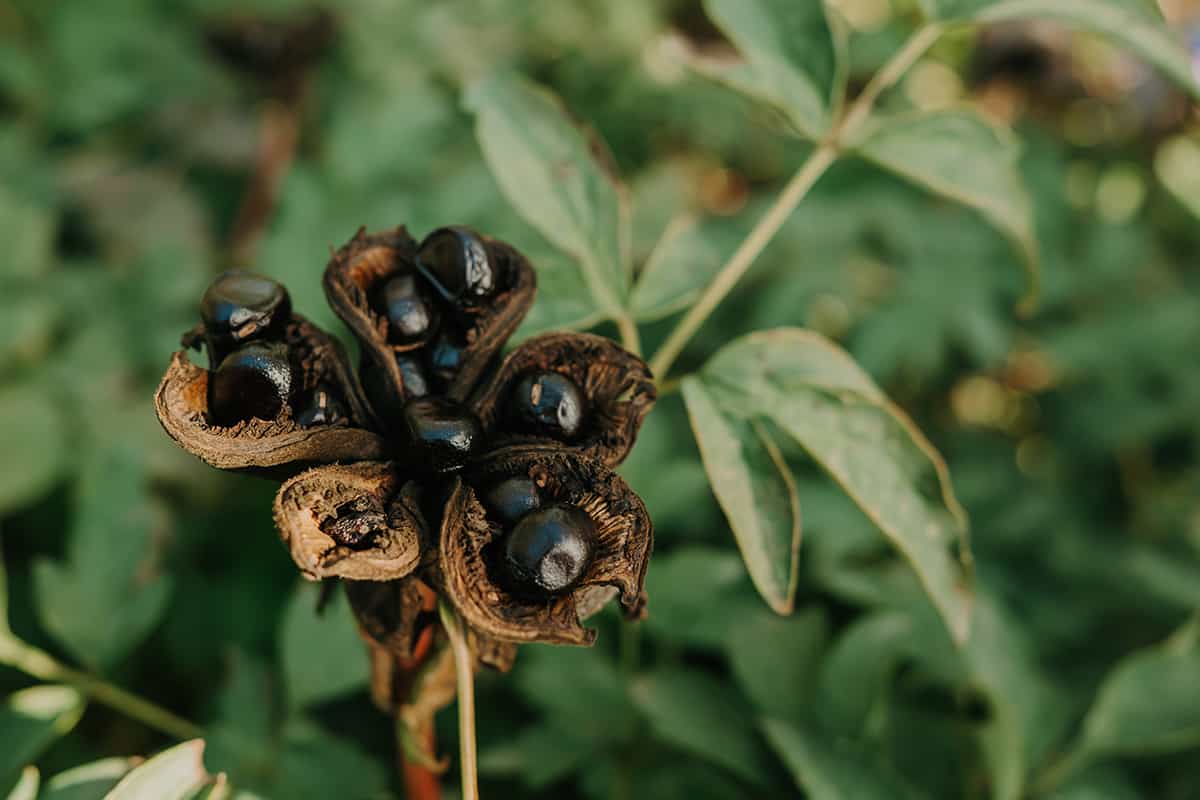
The next step on your journey for growing your own peony plants from scratch is harvesting the seeds. After the flowers have died, they will give way to seed pods which are initially green, and mature to brown. Once the seed pods have turned brown, this means they are ready to be harvested.
For tree peonies, this will typically be between early and mid-August, while for herbaceous peonies the pods are usually ready later in August. In some cases, the seed pods may have started to crack open, while others haven’t. You need to crack open the seed pods to reveal the seeds which are shaped like peas. Be very careful when removing the seeds because if they sustain any damage they will fail to germinate.
How to Sow Peony Seeds
Peony seeds that have been freshly harvested will either be a creamy-yellow color or black. The cream-colored seeds have yet to develop an outer layer, and therefore these will germinate faster. When planted in the fall, you can expect for these seeds to sprout above ground the following spring.
The seeds which are black have an outer layer that will need to be broken down, and when done naturally this can take time, which usually results in the seeds taking two spring seasons before they will germinate. There are ways you can speed this process along, for example by manually breaking down the outer layer of the seed before you plant it. This can be done with a coarse file, though be careful not to file back too much of the outer layer as this can damage the embryo, causing a failure to germinate.
Outdoors
Seeds that have been freshly harvested in August can be planted right away. Use plastic pots containing well-draining, fertile soil, and plant the peony seeds 2 inches deep. The seeds should be spaced at around 2 inches apart, facing any direction, since the roots will find their way downwards.
Water the seeds thoroughly, and tuck the plastic pots into holes in the ground so that the seeds and any developing roots will have protection against low winter temperatures. In terms of lighting, the pots should be positioned in partial shade, with around 6 hours of sunlight each day.
If the late summer weather is still warm, the seeds may sprout at this point, with roots developing further during cool fall weather, though you should not expect any sprouts to appear above ground until at least the following spring. Ensure the seeds do not dry out during this time; this may mean supplemental water is necessary in the absence of rainfall. In the fall, add a few layers of mulch over the soil to protect the seeds from freezing.
This can then be removed in spring, a few weeks after the ground has thawed from the final frosts of winter. At this point, you can start applying a mild fertilizer to the soil, to encourage stronger and better growth. Use a diluted all-purpose fertilizer once every eight weeks from April through to September.
If the seeds planted were cream colored, without their dark outer shell, then you should see sprouts appear above soil level in spring. Allow these to grow until September or October, at which point you can then move the seedlings to a more permanent spot, either in a larger pot, or directly planted in the ground.
Peonies do not like to be moved and can react badly from the stress, so be sure to only move the seedlings in the fall, and carefully consider where you are moving them to so that they won’t need to be dug up and disturbed again in the future. If the seeds had their hard outer coating when they were planted, then they may not sprout until the following spring. Follow the same guidelines, but with a longer timeframe.
Indoors
Peony seeds can also be planted indoors. Collect your seed pods and place them in a brown paper bag, in a cool and dry spot for around a week, such as a garage. This helps to cure the pods, and they can be opened up after this, and moved into a zip lock bag containing damp sand. This bag should then be stored in a warm place in the home, for example, a shelf above a radiator, with a temperature of around 80°F.
It can take anywhere from one month to three months for these seeds to sprout roots. Once your seeds have white roots sprouting out of them, you can plant them outside using the guidelines above, or you can refrigerate them for three months. Peony seeds need a period of cold stratification, which mimics the conditions of winter dormancy. After three months in the refrigerator, you can plant the seeds outside, or plant them in pots indoors underneath grow lights.
As above, once your sprouted seeds have developed into seedlings, they will need to be moved to their permanent home in the fall, at which point the seedlings should be a few inches tall. Take extra care when handling sprouted seeds because they are very fragile and vulnerable to damage which would prevent germination.
Caring for Peony Seedlings
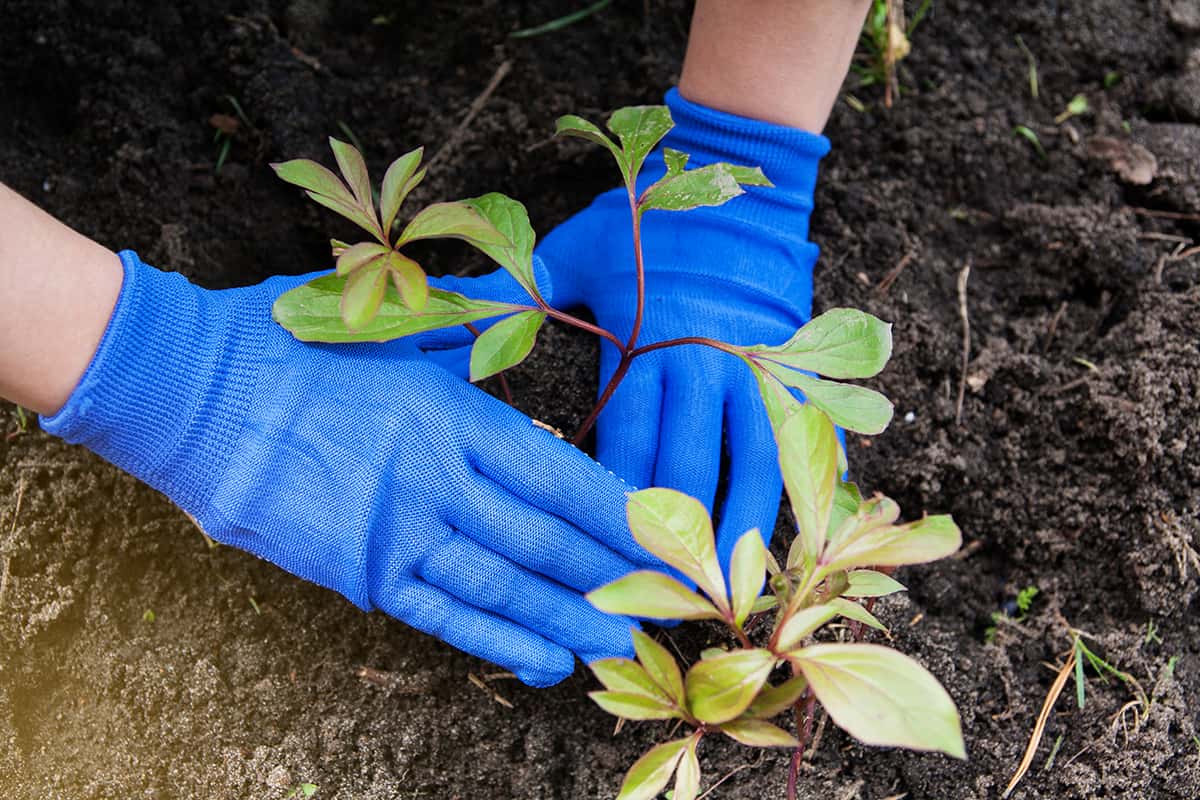
Once your seedlings have been planted in their final spots, you can continue to care for them as you would a regular peony plant. This will involve ensuring they have at least 6 to 8 hours of direct sunlight each day, and that their well-draining soil is kept moist but not wet. Peony seedlings should be protected from harsh winds, and mulched over winter to insulate the roots.
It is very unlikely for peonies to flower in their first and second year, so you will need to be patient when growing peonies from seed. They will usually flower in their third year, though heavy blooming may not occur until the fourth or fifth year. When a peony has grown from seed eventually blooms it is very exciting and satisfying. Peony seeds do not produce flowers that are true to those of their parents, so it will be a surprise to find out what your peony flowers look like.
